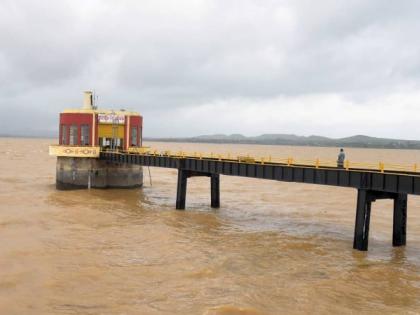Nashik Dams Reach 57% Capacity After Recent Heavy Rainfall
By Chitra | Updated: August 6, 2024 12:37 IST2024-08-06T12:37:26+5:302024-08-06T12:37:49+5:30
Recent heavy rainfall in the Nashik district's catchment areas has boosted the total water storage in local dams to ...

Nashik Dams Reach 57% Capacity After Recent Heavy Rainfall
Recent heavy rainfall in the Nashik district's catchment areas has boosted the total water storage in local dams to 57% of their full capacity. Currently, the dams, which have a combined capacity of 65,664 million cubic feet, hold 37,485 million cubic feet of usable water.
Adequate water levels in the dams are alleviating year-round water stress, providing a stable supply for agriculture, industries, and residential needs. However, insufficient rainfall could lead to severe water scarcity. Despite the monsoon beginning two months ago, the catchment areas had remained dry until the recent heavy rains significantly boosted water levels in the dams.
The Gangapur Dam group, consisting of four dams, is crucial for meeting the district's water needs. The total water storage in these dams has now reached 8,018 million cubic feet. On August 5 last year, this group had 7,083 million cubic feet or 70 percent of usable water. This year, the water storage has increased by nine percent. Gangapur Dam is currently 86 percent full, while Gautami Godavari Dam is at 87 percent capacity. Interestingly, last year, this dam had only 51 percent usable water storage, making this year's storage 36 percent higher.
Additionally, Kashyapi Dam has 51 percent water storage, and Alandi Dam is at 75 percent capacity. The substantial increase in water storage across these dams ensures that Nashik's water needs are met more effectively this year, mitigating the risk of water scarcity. The district looks forward to a more secure water future, thanks to the timely rains.
Open in app